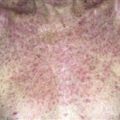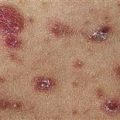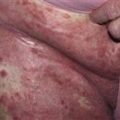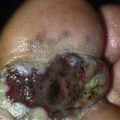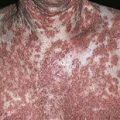89
Henoch–Schönlein purpura
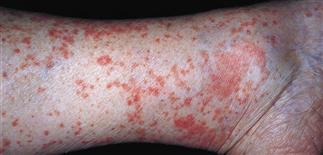
Pinhead-sized to 2-cm purpuric papules classically appear on the buttocks and lower extremities. Edema of the hands and feet can be prominent.
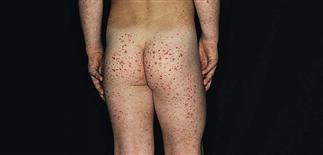
Skin lesions begin as symmetric pink papules that evolve into purpuric papules; palpable purpura is the classic cutaneous lesion of leukocytoclastic vasculitis.
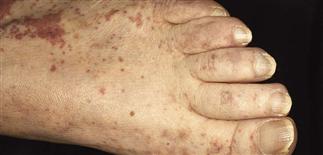
Although less commonly affected than children, adults can develop Henoch–Schönlein purpura.

The buttock and lower extremities are classic locations for purpuric papules seen with small-vessel vasculitis. From Bolognia JL, Jorizzo JL, Rapini RP, eds. Dermatology. London: Mosby; 2003.
DESCRIPTION
An IgA immune complex small-vessel vasculitis resulting in palpable purpura, joint pain, abdominal pain, and glomerulonephritis.
HISTORY
• Ninety percent of affected individuals are younger than 10 years old; boys 4–8 years old are at highest risk. • Peak incidence during winter months; commonly follows an acute respiratory illness by 1–2 weeks, suggesting that infection is an important initiating factor. • Up to 2 weeks before purpura onset; 40% develop low-grade fever, headache, arthralgias, and abdominal pain. • Most commonly affected extracutaneous organs: joints (80%), gastrointestinal tract (70%), kidney (45%). Scrotal pain can occur before the purpura, mimicking testicular torsion. • Self-limited in most, lasting less than 1 month. Long-term prognosis determined by severity of renal involvement.
PHYSICAL FINDINGS
• Symmetric pink to red macules quickly evolve into purpuric papules ranging from pinhead-sized to 2 cm. • Buttocks and lower extremities are commonly involved sites. • Lesions occur in crops and fade within 2 weeks. • Edema of hands and feet can be prominent. • Children younger than 3 years old develop striking edema around eyes, scalp, and ears.
TREATMENT
• Manage arthralgias with non-steroidal anti-inflammatory drugs. Systemic corticosteroids and immunosuppressive agents for severe renal and gastrointestinal complications.

